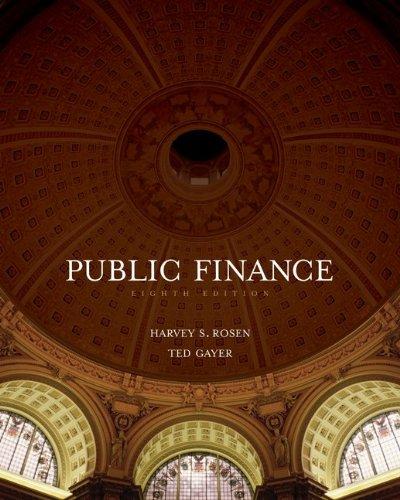Question
Latimore Constructions Corp has the following capital situation: Debt: The firm issued 10,000 25 year bonds 10 years ago at their par value of $1000.
Latimore Constructions Corp has the following capital situation:
Debt: The firm issued 10,000 25 year bonds 10 years ago at their par value of $1000. The bonds carry a coupon rate of 8% and are now selling to yield 10%.
Preferred Stock: The company sold 30,000 shares of preferred stock six years ago at a par value of $50. The shares pay a dividend of 8%. Similar securities are no yielding 9%.
Equity: Latimores initial financing was a sale a 2 million shares of common stock at $12 per share. Retained Earnings are now $5 million. The current stock price is $13.25.
The Target capital structure that Latimore aims to maintain is 30% debt, 5% preferred stock and 65% common stock.
Other information:
- Latimores marginal tax rate (state and federal) is 40%.
- Flotation costs average 12% for common and preferred stock.
- Short term Treasury bills currently yield 7.5%.
- The expected return on stocks is 12.5%.
- Latimores beta is 1.20.
- Latimore expects steady growth at 6% to continue.
- The last annual dividend was $1.00 per share.
- Latimore expects to earn $5 million after taxes next year.
- The firm can borrow an additional $2 million at rates similar to the market rate on its existing debt. Beyond that, lenders are expected to demand a higher return in the area of 14%.
- The following capital budgeting projects are under consideration:
| Project | IRR | Capital Required | Cumulative Capital |
| A | 15% | $3 million | $3 million |
| B | 14% | $2 million | $5 million |
| C | 13% | $2 million | $7 million |
| D | 12% | $2 million | $9 million |
| E | 11% | $2 million | $11 million |
Complete the following assignment:
a. Calculate the firms existing capital structure based on book value and again based on market value. How does it compare to the target capital structure?
b. What is the current cost of debt for the company?
c. What is the cost of preferred stock ?
d. Estimate the cost of equity raised by issuing new shares using the dividend growth method.
e. Calculate the cost of retained earnings using three approaches; CAPM, dividend growth method and risk premium. Reconcile the three approaches into a single estimate for the cost of retained earnings.
f. Using the target capital structure, calculate the WACC, including retained earnings.
g. Where is the first breakpoint in the Marginal Cost of Capital (MCC). That is, the point where retained earnings run out.
h. Calculate the WACC after the first breakpoint.
i. Calculate the WACC after the second breakpoint.
k. Plot the MCC for Latimore.
l. Which projects should be accepted and which projects should be rejected, based on this analysis only?
Step by Step Solution
There are 3 Steps involved in it
Step: 1

Get Instant Access to Expert-Tailored Solutions
See step-by-step solutions with expert insights and AI powered tools for academic success
Step: 2

Step: 3

Ace Your Homework with AI
Get the answers you need in no time with our AI-driven, step-by-step assistance
Get Started


